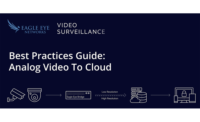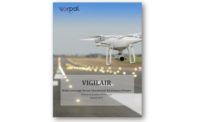Eagle Eye Networks has released its “12 Security Camera System Best Practices for Cyber Protection” white paper. The report covers the major vulnerabilities for security camera systems and the twelve corresponding cyber security best practices. The best practices are designated according to whether the system is a true cloud solution or a traditional DVR, NVR or VMS connected to the Internet or corporate network.
Users of video surveillance are typically protecting employees and company assets. With today’s increasingly Internet-connected surveillance systems, users need cyber protection or they will expose their companies to serious threats, loss of customer data, and loss of company reputation.
“Not only are cyber breaches a major corporate expense, they can destroy the hard-built trust between companies and their customers,” said Dean Drako, president and CEO at Eagle Eye Networks. “Almost 70 percent of IT is concerned with cyber-security for video surveillance systems. We created these best practices so companies can get a similar level of cyber protection on their video surveillance system as they target with their traditional IT systems.”
This white paper focuses on the best practices for Internet-connected security camera systems and cloud-managed video surveillance. Many of these practices also apply to other physical security systems.
The vulnerabilities and cyber-safe best practices for security camera systems covered are:
1. Camera passwords
2. Port forwarding
3. Firewalls
4. Network topology
5. Operating systems
6. Operating systems passwords
7. Video surveillance system passwords
8. Connection encryption
9. Video encryption
10. Mobile
11. Physical access to equipment & storage
12. Video recording software
The complete white paper can be downloaded at www.eagleeyenetworks.com/security-camera-system-cyber-best-practices.
For information, visitwww.eagleeyenetworks.com.



